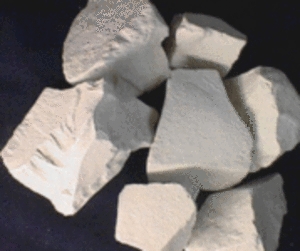 I was intrigued to see the meta-analysis of diosmectite in acute diarrhoea appear in the Arch Dis Child recently – partly ’cause I’d no idea what diosmectite was, and partly because I spend a lot of my time with folk who poo too little or too much.
I was intrigued to see the meta-analysis of diosmectite in acute diarrhoea appear in the Arch Dis Child recently – partly ’cause I’d no idea what diosmectite was, and partly because I spend a lot of my time with folk who poo too little or too much.
When taking a look at a systematic review, it’s worth using a FAST appraisal schema, but starting by identifying the PICO question that the review seeks to answer.
You may recall that an emerging standard for systematic reviews is their protocol having been pre-registered. This group did do:
The PICO is pretty much what I’d be expecting;
[Patients]: Children (<5y) with acute diarrhoea
[Intervention]: Diosmectite, added to standard treatment
[Comparison]: Standard treatment alone
[Outcome]: Decreased duration &/or intensity of diarrhoea, no increased risk of ileus, constipation or vomiting.
Given this is relatively sensible, the next thing to do is move onwards to the FAST appraisal.
F – did they find all the studies? (Look for the search technique; should be multiple databases, using wide spread of key words, and independently examined with two different researchers.) Looks pretty reasonable.
A – was an assessment of study quality undertaken? (Look for them using a ‘risk of bias’ assessment. This should include elements of randomisation, follow-up, measurements and blinding.) Well, the group used a classical assessment tool – the Cochrane risk of bias tool – and show us that there are a range of biases in the studies that are included.
Beyond the assessment of individual studies, an assessment of how that risk of bias may affect results is warranted. This group looked at the major single factor – allocation concealment – for a subgroup analysis, along with blinding, a further sensible approach.
S – what synthesis was undertaken – how were the studies combined? (Think about the nature of the heterogeneity in the studies – clinical, and statistical, and what would be reasonable and unreasonable to combine?) The group used a random effects model, and then took a series of predefined subgroups to see if the initial heterogeneity (I² of 91% – really very high) was reduced by looking for difference between the studies. It was: splitting by age of child seemed to reduce the heterogeneity, with older children showing, apparently, less of a benefit than younger ones in mean difference of time to resolution of diarrhoea: <12m -31 hours, cf -20 hours for <24m, and -18 hours in 24-60m old.
The assessment in other outcome descriptions (e.g. proportional cure rate, stool output volumes) were reported less thoroughly and an analysis could not be undertaken. This is a good reason why standard core outcome sets are important in trials.
There should also be an assessment of publication bias; the chance of publication of a study being more or less likely depending upon the results it showed. This group undertook this, with a funnel plot too, and showed
The funnel plot shows studies on the right of the dotted triangle appear to be ‘missing’, looking like there may have been an increased likelihood of publication if the studies showed an effect from diosmectite.
T – transferability / take home message. (What can you take out of the review?) The authors here have undertaken a GRADE table review of the results, to come up with a clinically interpretable conclusion. There’s also a practical issue – could diosmectite be prescribed in your hospital?
For me, the take home message is that this adjuvant (diosmectite) might have a benefit, but the uncertainties in potential publication bias, the relatively small average duration improved – if any – and the lack of clarity in a coherent answer to the ‘side effects’ side of the question make this an intervention I will not be seeking to source. there’s another element too – I start from a relatively nihilistic view with medications to improve diarrhoea – and so anything that’s going to change my view will have to have a large effect size and be convincing in the rigour of the studies.
